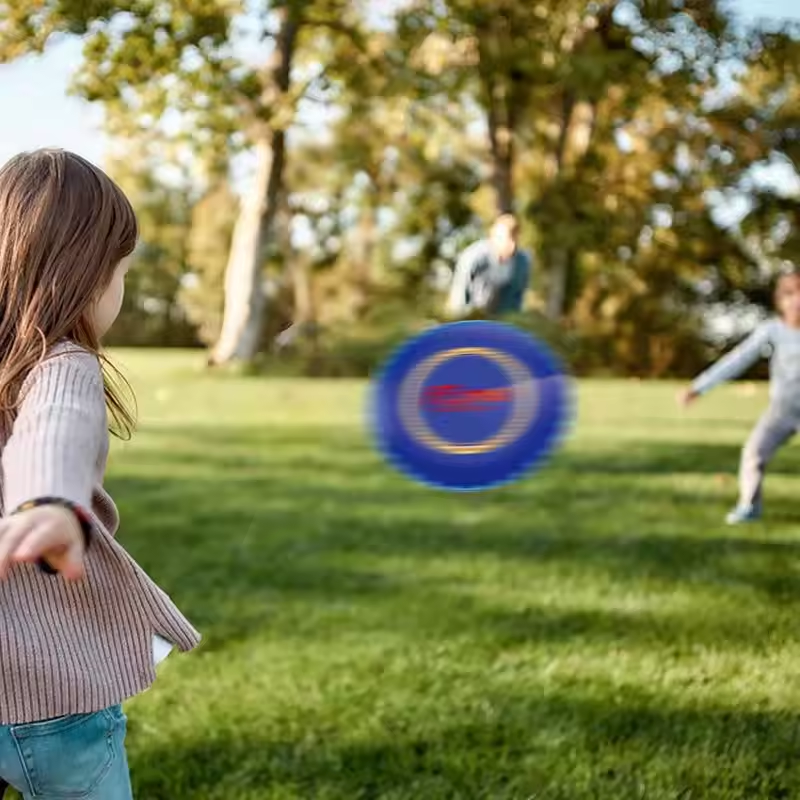Key Measurements for an Ultimate Frisbee Field
When building an ultimate frisbee field, it is crucial to adhere to specific measurements for regulatory play. The field should measure 64 meters in length and 37 meters in width. These dimensions include end zones that are each 18 meters deep. A clear central zone known as the ‘brick mark’ should be 18 meters from each end zone line. This mark indicates where the disc is placed to resume play after it goes out of bounds or there is a stop in play.

Additionally, sidelines must be marked clearly, as they define the playing field’s boundaries. The playing field should have buffer zones around it, typically about 3 to 5 meters wide, to ensure players do not collide with spectators or objects. This buffer also helps keep the play within a safe and controlled area.
It’s essential to ensure the lines marking the field are prominent and distinguishable. For this purpose, use bright, field marking paint that holds well against weather and wear. Permanent fixtures such as goal posts are not used in ultimate frisbee, so temporary boundary markers may be used and removed as necessary.
Lastly, it’s beneficial to mark out a few extra lines for player substitution areas and to delineate team ‘benches’ or resting areas safely outside the buffer zone. Each of these measurements and markings contributes to an optimal and competitive ultimate frisbee field set up.
Choosing the Right Location
Choosing the right location is vital for setting up an ultimate frisbee field. Opt for a flat, open space that allows players to move freely without obstructions. Ensure the area is large enough to fit the regulation field dimensions, including buffer zones. Look for locations away from trees and power lines that pose safety risks and can interfere with play.
Accessibility is another key factor. Players and spectators should be able to reach the field with ease. Consider proximity to public transport, parking availability, and walking paths. A location near additional facilities like restrooms, changing areas, and water fountains increases convenience and comfort.
The ground condition is also critical. Grass fields are most common for ultimate frisbee, providing a softer surface that reduces injury risks. However, the field must have good drainage to prevent water accumulation that can lead to cancellations or hazardous playing conditions.
Lastly, consider the field’s orientation. The direction of the sun during peak playing hours can impact visibility. Ideally, the main direction of play should be north to south to minimize sun glare for players. This consideration enhances the playing experience and ensures fairness in the game.
Select a location that checks all these boxes for a well-rounded, safely designed ultimate frisbee field.
 Preparing the Ground for Field Development
Preparing the Ground for Field Development
Before laying out an ultimate frisbee field, the ground must be prepared properly. Start with a thorough inspection of the area. Remove rocks, debris, and other hazards that could injure players or interrupt game play. The ground should be level to prevent uneven bounces and ensure fair play.
Next, focus on the soil condition. If the ground is too hard, it may need aeration to facilitate root growth for grass. For areas with poor drainage, consider grading or installing a suitable drainage system to prevent water accumulation. This step is critical for maintaining a playable surface even after rain.
After addressing the soil and drainage, it’s time to lay the sod or seed the grass. Choose a grass type that is durable and can withstand heavy foot traffic. It should also be able to recover quickly from wear and tear. Water the grass regularly to establish a healthy, thick turf that will cushion falls and enhance play.
Finally, implement a routine inspection and grooming schedule. Regularly check for holes or uneven spots in the grass and repair them promptly to ensure the field remains playable. Compact areas where the ground may be too loose and reinforce spots vulnerable to damage.
By taking these steps, you will create a solid foundation for an ultimate frisbee field that is safe and enjoyable for all players.
Necessary Equipment and Materials
To set up an ultimate frisbee field, you’ll need a range of equipment and materials. Start with the basics: field marking paint is essential for creating clear boundaries and lines. Make sure the paint is bright and durable against the elements. For temporary markings, consider using cones or flags that can be placed and removed as needed.
Next, you’ll need a measuring tape or wheel to ensure all lines and zones meet the correct dimensions. The precision of the measurements contributes to the fairness of the game. A line marking machine can help create straight and consistent lines across the field.
For the buffer zones, soft boundary markers provide safety without the risk of injury. These should be noticeable and distinguishable from the playing field lines. Reserve a few tools like anchors or weights to secure the markers against wind or movement.
Invest in a maintenance kit for the field. Include rakes, seed spreaders, and lawn rollers in the kit. These tools keep the ground level and the grass in good shape. A regular maintenance routine will help the field stay playable and safe.
Don’t forget accessories for players and officials, such as scoreboards, whistles, and stopwatches. These items make it easier to keep track of the game and enforce rules.
Choose each piece of equipment with care. Opt for quality materials that can endure heavy use and various weather conditions. This ensures longevity and reliability, keeping the ultimate frisbee field in the best condition for players to enjoy.
 Marking the Field: Boundaries and End Zones
Marking the Field: Boundaries and End Zones
Marking the field accurately is critical for fair play in ultimate frisbee. Use field marking paint that is highly visible and weather-resistant. Start by marking the boundaries which are 64 meters by 37 meters. Make sure these lines are straight and clear. Then, move on to the end zones at each end. These should be 18 meters deep. The clarity of these lines is important for defining the scoring areas.
Next, mark the central zone with the ‘brick mark’. This is 18 meters from each end zone line. It shows where play will resume after the disc goes out of bounds. Also mark side and buffer zones. The buffer should be about 3 to 5 meters wide around the field. This keeps players safe from the surrounding area.
Finally, consider the use of temporary markers like cones or flags for flexibility. They can be used if the field will not permanently host ultimate frisbee games. Remember that all equipment used to mark the field must be secure. This ensures that it remains in place during games. Proper field marking is essential for ensuring that ultimate frisbee is played under the best conditions.
Installation of Goals and Sidelines
While ultimate frisbee does not involve permanent goalposts, defining clear sidelines is essential. Sidelines outline the playing area and ensure that gameplay remains within designated boundaries. These lines, part of the overall field markings we discussed earlier, typically extend the length of the field, defining its maximum width of 37 meters. For the goals, namely the end zones, ensure they are marked at an 18-meter depth, as per standard ultimate frisbee regulations.
To install these sidelines and end zones, you’ll start with the precise measurements we highlighted under ‘Key Measurements for an Ultimate Frisbee Field.’ Use durable, weather-resistant field marking paint to ensure that the visibility of these lines withstands natural elements and the wear and tear of gameplay. For non-permanent fields, consider using cones or portable flags that can be easily set up and removed when necessary.
Ensuring that sidelines and end zones are visually distinct and secure is crucial for fair play. Players rely on these markings for making strategic plays and to avoid stepping out of bounds, which could disrupt the flow of the game.
In summary, while there are no physical goals to install in ultimate frisbee, clearly marked sidelines and end zones are non-negotiable. Ensure their proper installation and maintenance to provide a fair and enjoyable gaming experience for all participants.
 Maintenance Tips for Keeping the Field in Top Condition
Maintenance Tips for Keeping the Field in Top Condition
Maintaining an ultimate frisbee field requires regular attention to ensure it remains safe, functional, and aesthetically pleasing.
Firstly, establish a routine grass cutting schedule. This keeps the playing surface level and prevents the growth of weeds. Opt for a cutting height that assures a balance between a soft landings surface and minimal slip risk.
Aeration is a crucial step. It prevents soil compaction, allows air, nutrients, and water to reach grass roots, and promotes a dense, resilient turf. Aim to aerate at least once or twice a year, depending on the field’s usage frequency.
Overseeding is beneficial too. It fills in any bare spots, improves the field’s overall density, and can enhance the turf’s resistance to diseases and pests. Choose high-traffic grass varieties specifically suitable for sports fields.
Consistent watering is key for grass health, particularly in dry periods. However, ensure not to overwater, as this can lead to shallow root systems and make the turf more susceptible to damage.
Regularly inspect for wear and tear. Repair damaged areas promptly to prevent them from worsening. This may involve reseeding or adding extra soil.
Finally, after marking the field, check that the lines remain visible and touch them up as necessary. The goal is to keep all ultimate frisbee field markings crisp for clear gameplay.
By following these maintenance tips, an ultimate frisbee field can provide a top-notch playing experience season after season.
 Safety Considerations for Ultimate Frisbee Field Design
Safety Considerations for Ultimate Frisbee Field Design
When designing an ultimate frisbee field, safety is paramount. Here are key factors to consider:
- Field Surface: Opt for grass or synthetic turf to reduce injury risks from falls. The surface should be even and free from holes or hazardous debris.
- Buffer Zones: Include buffer zones of at least 3 to 5 meters around the field. These protect players from colliding with spectators or objects.
- Playing Area Obstructions: Ensure there are no obstructions like trees or power lines close to the playing area. They can be dangerous and interrupt gameplay.
- Visibility: Mark the boundaries with bright, durable paint. Clear lines prevent players from accidentally stepping out of safe play areas.
- Emergency Access: Keep a clear path for emergency services around the field. Quick access could be vital during an emergency.
- Equipment Safety: Check all equipment before games. Secure any temporary markers or goals to prevent injuries.
- Gameplay Monitoring: Have referees or game monitors to watch for unsafe play or conditions. They can stop the game if needed for safety.
These considerations help ensure that the ultimate frisbee field is a safe environment for players and spectators alike. Following these tips will lead to enjoyable and injury-free games.